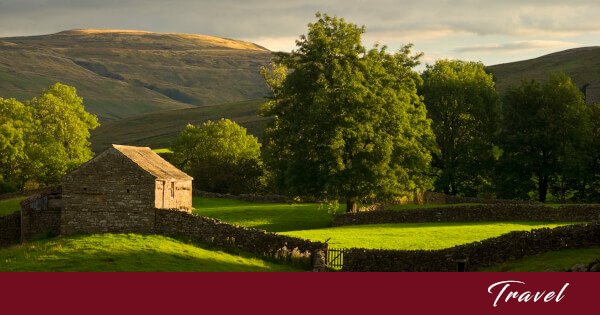If you take a trip to Lower Manhattan in New York City, you’ll find an eight-block-long street in the Financial District called Wall Street. But before Wall Street became synonymous with the financial markets, it was just a road.
The History
In 1624, the Dutch West India Company established a settlement on the southern tip of what is now Manhattan Island. They called it New Amsterdam. The East River and the Hudson River provided natural barriers along the east, south, and west sides of the island settlement. Only to the north, did it lack any type of defenses.
Twenty-eight years later, in 1652, the first Anglo-Dutch War began. Though mainly a naval conflict (one that would never reach American shores), fear that English colonists already in the area would attack overland prompted the New Amsterdam citizens to act. To protect their community, they built the Northern Palisade, a nine-foot-high wooden stockade wall.
The colony and its wall changed hands four times between 1653 and 1674. Control moved from the Dutch to the English, back to the Dutch, and finally back to the English, where it remained until the American Revolution.
Did You Know…
- The Lenape (Native Americans) called what’s now Manhattan Island, “Manahatta,” or “hilly island.”
- The wall costs 5,000 Dutch guilders to build. In contrast, Manhattan Island, purchased 25 years before, costs only 60 guilders.
The Name
In New Amsterdam’s original records, the Dutch wrote about the palisades or works. They called these fortifications—comprised of all defense features, including the road—“Het Cingel,” (pronounced “single”), meaning “the belt.” There is no documented evidence that they named the street. So, it was probably the English, not the Dutch, who creatively called the street that ran beside the wall, “Wall Street.”
Did You Know…
- The street remained, but the wall was demolished in 1699.
- If you look closely at Wall Street’s cobblestones, you’ll see post markers of the wall running down the center of the road.
The Street
Originally, the wall ran from the East River on the east side across the island to the Hudson River on the west side. Over time, the island was expanded. To the east, a landfill project pushed the shoreline out further, and the street grew with it. However, it was a different story on the west side. There, though the river was also pushed back and the shoreline expanded, Wall Street did not continue. Trinity Church and its graveyards blocked its path. (For more about Trinity Church, read DYK This Famous New York Church Was Built With The Help Of A Pirate Turned Privateer?)
In the early days, Wall Street was mostly a residential area. But as the wall’s gates became popular spots for vendors and businesses to gather, the road gradually evolved into a major trade route and commerce center.
The new nation also called Wall Street home, for a time, when NYC became the U.S.’s first capital in 1788. That year, inside Federal Hall, the U.S. Congress approved amendments that would eventually become the Bill of Rights. The next year, on its balcony, George Washington took the first presidential oath of office.
Did You Know…
- In 1694, the first wharf was built where Wall Street ended at the East River.
- The city’s slave market was set up at the east end of Wall Street between 1709-1711. It remained there until the market closed in 1762.
- Prior to being renamed Federal Hall, and housing the U.S. Congress, the building at 26 Wall Street, served as NYC’s second city hall. (The current Federal Hall building was built in 1842. The original building, completed in 1703, was demolished in 1812.)
The Fire
The buildings on Wall Street survived Lower Manhattan’s 1776 fire, but the street wasn’t as lucky during NY’s biggest fire, The Great Fire of 1835. Starting in a warehouse in Hanover Square, the fire moved quickly north to Wall Street. Though it didn’t reach the second Trinity Church (1790) on the west end of the street, it destroyed most of the city’s financial center, as well as all traces of its early Dutch and English heritage.
Did You Know…
- The original Trinity Church at the west end of Wall Street, along with 500-600 other buildings on the west side of Lower Manhattan, burned in the 1776 NYC Fire.
- The 1835 fire, second only to London’s Great Fire of 1666 in size and devastation, swept through seventeen city blocks (covering thirteen acres) and destroyed nearly 700 buildings. Though only two people died, the damages totaled over $20 million.
- The Bank of the United States, built in 1822, was one of the few buildings to escape the fire. Though demolished in 1912, its facade—the only example of pre-fire Wall Street—is now in the American Wing of the Metropolitan Museum of Art.
Final Thoughts
Today it’s hard for us to picture Wall Street as just a road beside a wooden wall. I can only imagine what those early Dutch settlers would think if they saw it now. I’m sure they couldn’t have conceived how their simple road would change. Its eight short blocks have been home to some of Manhattan’s most elegant houses, the U.S. Congress, as well as worldwide commercial and financial businesses.
Few other streets in the world can match Wall Street for name recognition. So, though the 372-year journey hasn’t always been easy, it can definitely be called a success.


Never knew this…
Interesting read!
Thank you.
Thanks, James, I’m glad you enjoyed it.